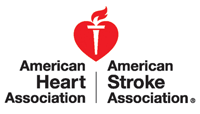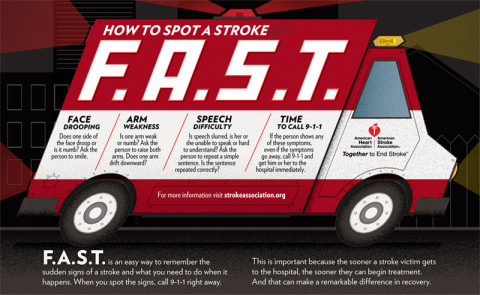 San Diego, CA – Parents and healthcare professionals must be aware that children can have strokes and be prepared to respond to symptoms, according to research presented at the American Stroke Association’s International Stroke Conference 2014.
San Diego, CA – Parents and healthcare professionals must be aware that children can have strokes and be prepared to respond to symptoms, according to research presented at the American Stroke Association’s International Stroke Conference 2014.
As in adults, warning signs of stroke in children are: sudden weakness or numbness of the face, arm or leg; sudden difficulty in speaking; sudden problems in seeing; sudden difficulty walking; dizziness; or sudden onset of headache.

Symptoms of stroke didn’t vary by age, although seizures were more common in younger children and strokes mostly occurred at home and to a lesser extent at school.
Though most of the parents thought the symptoms were serious, only about half called 9-1-1; 36 percent considered the possibility of stroke; and 21 percent had a “wait and see” attitude or called a relative before taking emergency action.
“Think stroke, act fast, and call 9-1-1,” said Mark MacKay, M.D., lead researcher and director of the Children’s Stroke Program at the Royal Children’s Hospital and Murdoch Children’s Research Institute in Melbourne, Australia. “That message applies to adults and children.”
Median time from symptom onset to emergency room arrival was 1.8 hours, with some taking as long as 24 hours.
In previous studies in the United States, Canada, England and Australia, the average time delay to diagnose stroke in children was more than 24 hours.
“Getting to the hospital quickly is an essential first step to develop strategies to improve access to emergency treatment in children,” MacKay said.
Children won’t receive the benefits of emergency clot-busting treatment unless “we develop strategies to improve the rapid recognition of childhood stroke,” he said. Clot-busting treatment must be started within three to four and a half hours of symptom onset.
Child neurologists should educate primary care physicians, pediatricians, heart specialists and emergency room physicians about stroke in children and parents of children with conditions associated with increased risk such as sickle cell disease or heart conditions urgently need to be aware, MacKay said.
Co-authors are: Belinda Stojanovski, R.N.; Geoffrey Donnan, M.D.; Leonid Churilov, Ph.D.; Ian Mosely, Ph.D.; Grant Hocking, paramedic; Paul Monagle, M.D. Author disclosures are on the abstract.
The National Stroke Foundation and Murdoch Children’s Research Institute in Melbourne, Australia funded the study.
F.A.S.T. is an easy way to remember the sudden signs of stroke. When you can spot the signs, you’ll know that you need to call 9-1-1 for help right away. F.A.S.T. is face drooping, arm weakness, speech difficulty and time to call 9-1-1. To find stroke certified hospitals, you can download the free “Spot a Stroke F.A.S.T.” mobile app from the iTunes or Google Play stores.



Great reminder on stroke, especially the use of “FAST,” the proven way to remember the signs of stroke.
Watch/download the FAST video:
http://www.mass.gov/dph/heartstroke
(First link below “Videos.”)
Ask me about re-broadcasting the video, and free educational resources on stroke and other health topics.
Slainte!
ted.clark@state.ma.us